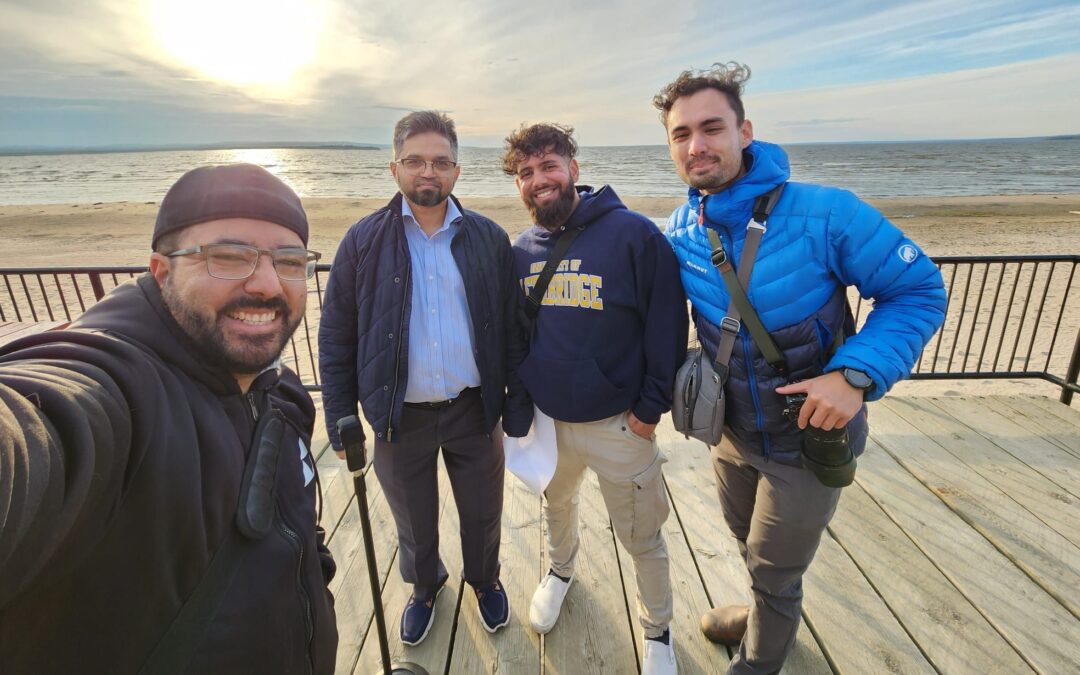
by Jacob Billings | Oct 16, 2023 | Virtual Reality
In an exciting announcement, Winged Whale Media has unveiled its partnership with Alberta Health Services to embark on a groundbreaking journey in the world of virtual reality and 360-degree video. The aim? To create a captivating campaign that will not only attract but inspire talented doctors from around the world to consider practicing and living in the beautiful province of Alberta.
Exploring the Virtual Realm
Virtual reality and 360-degree videos have become powerful tools in the realm of storytelling and communication. They transport viewers to different worlds, allowing them to experience places and situations as if they were there themselves. It’s this immersive quality that Winged Whale Media and Alberta Health Services are harnessing to shed light on the unique opportunities and breathtaking landscapes Alberta has to offer.
The Mission: Attracting Top Medical Talent
The central goal of this partnership is clear: to bring top-tier medical professionals to Alberta. With an ever-growing demand for healthcare services and a commitment to providing the best possible care for its residents, Alberta Health Services is looking to expand its pool of medical talent.
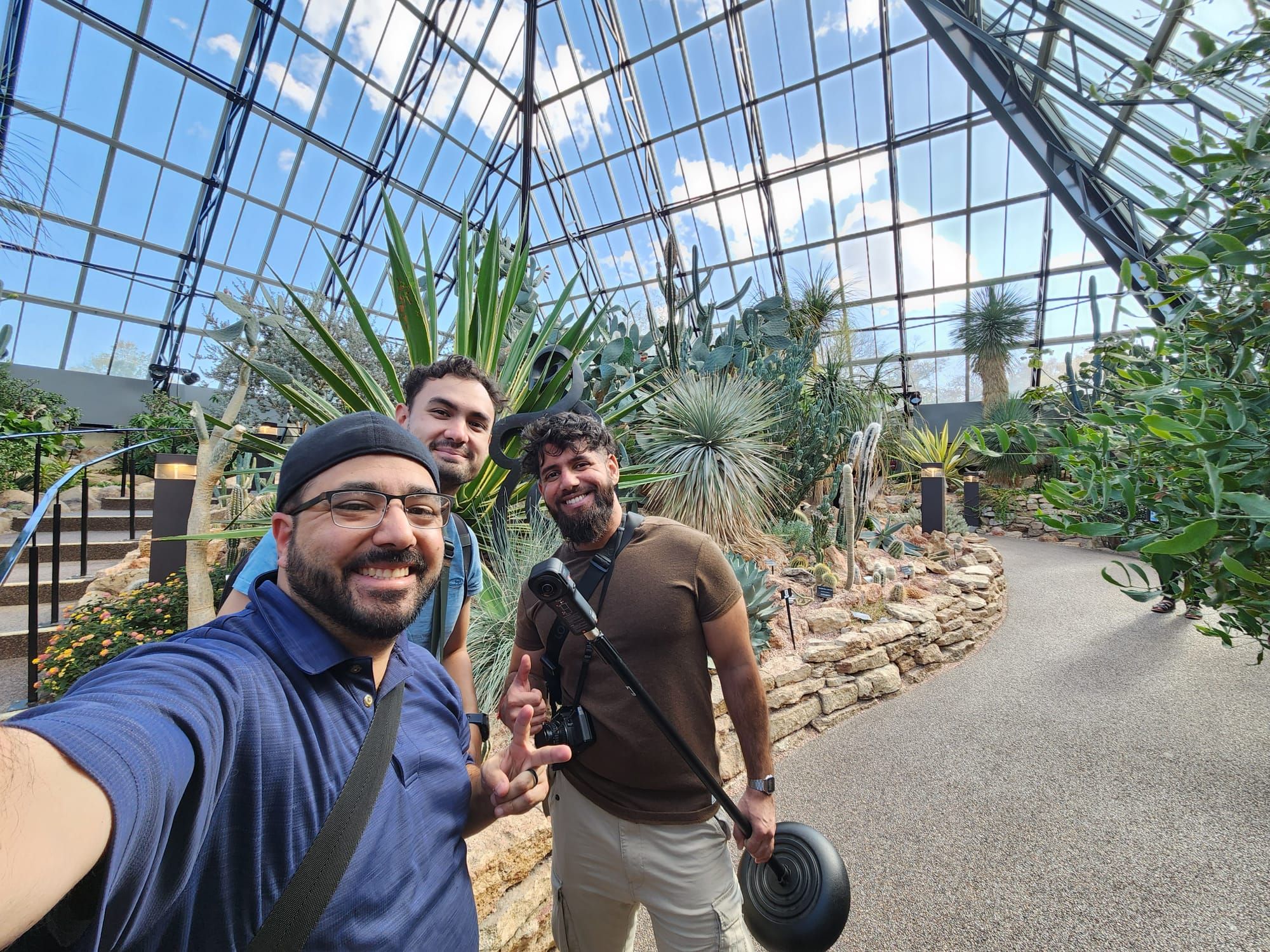
The Heart of the Campaign: Real Stories
So, how do you persuade skilled doctors to make the move to Alberta? By sharing the stories of those who have already taken the leap and found their calling in this province. The campaign will feature passionate doctors who will share their personal experiences and explain why Alberta is not just a place to work, but a place to call home.
From Immigration Pathways to Rural Opportunities
The campaign’s content will cover a diverse range of topics. It will explore immigration pathways, making it easier for doctors from around the world to understand how they can join the Alberta healthcare community. Additionally, it will highlight the unique opportunities available in rural areas, showcasing the impact that doctors can make in underserved communities.
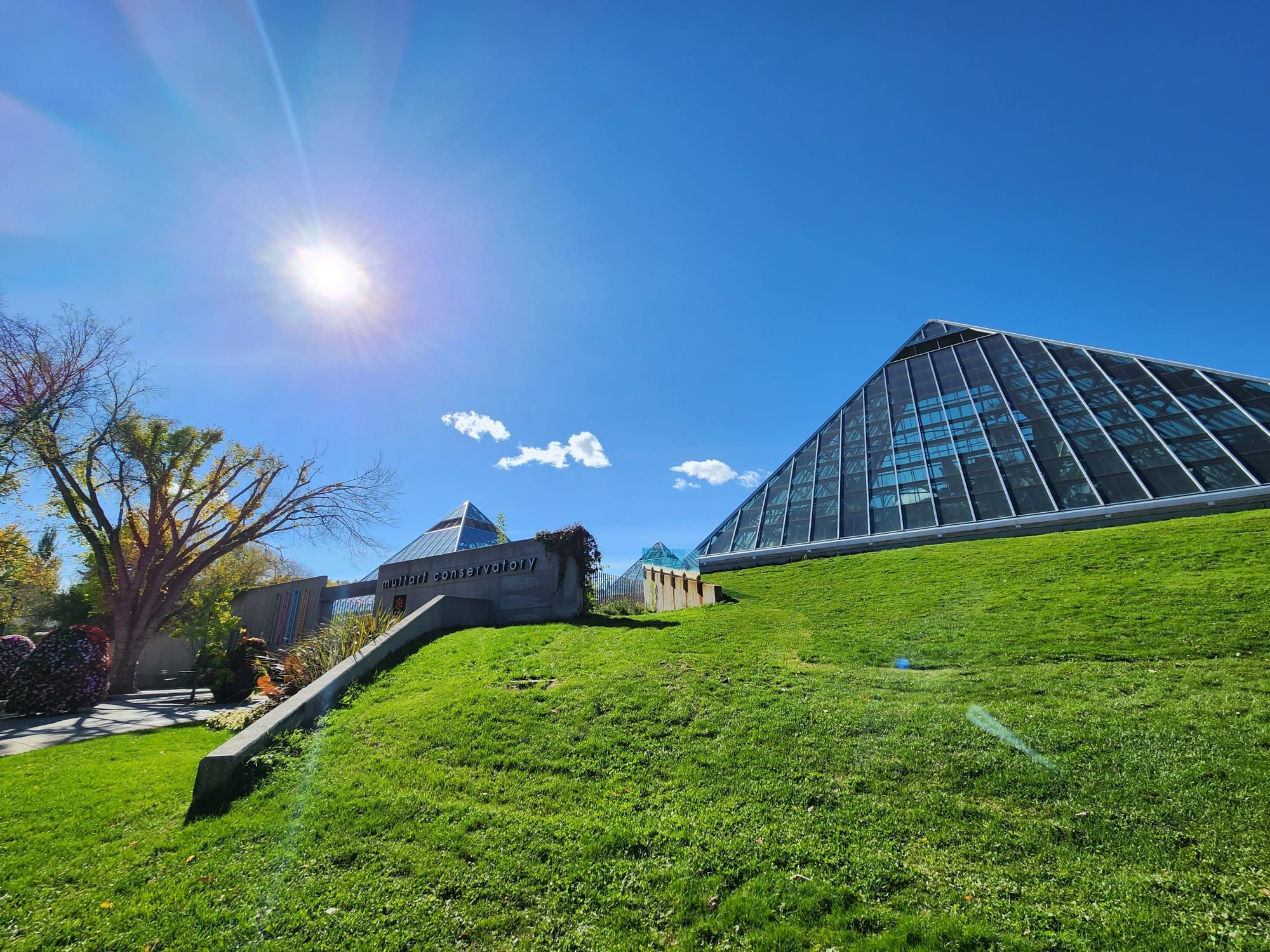
Alberta’s Natural Beauty
One cannot talk about Alberta without mentioning its unparalleled natural beauty. From the stunning Rocky Mountains to the vast prairies, Alberta offers a diverse range of landscapes that are as breathtaking as they are awe-inspiring. The campaign will not only focus on the professional aspects of living and working in Alberta but will also delve into the lifestyle and leisure opportunities the province has to offer.

Stay Tuned for More!
This is just the beginning of what promises to be an eye-opening and inspiring campaign. Winged Whale Media and Alberta Health Services invite you to stay tuned for more updates as they embark on their journey across the province, capturing the essence of Alberta and the incredible stories of the doctors who call it home.
In a world where virtual reality can bring us closer to experiences and places we’ve never imagined, this collaboration between Winged Whale Media and Alberta Health Services is an exciting step towards shaping the future of healthcare recruitment. Together, they’re not just creating a campaign; they’re crafting an immersive narrative that will showcase everything that makes Alberta special and enticing for talented doctors worldwide.
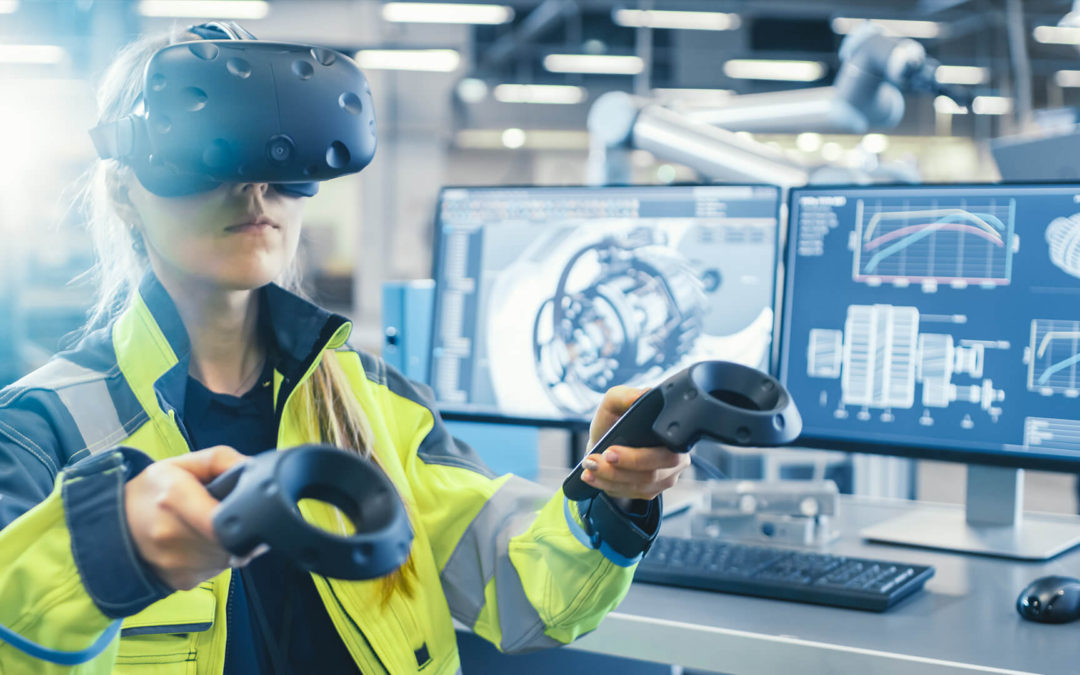
by Jacob Billings | Jun 14, 2021 | Virtual Reality
Virtual reality training poses an alternative and engaging method to develop new skills. But, if you are considering incorporating immersive technologies into your company’s training course, how can you verify that it provides a realistic, long-term answer to your skills requirements? There are many positives and advantages that point to a great benefit in immersive training as VR technology advances. Employees acquire skills faster, retain information better, and increase productivity and safety by allowing them to participate in hands-on, practical training in a safe virtual environment. Furthermore, there are financial advantages.
5 Benefits of using VR for training
Improved Learning and Performance
People learn from job-related experiences 70% of the time, compared to 20% from interactions with others and 10% through formal learning, according to the 70/20/10 learning and development principle.
Learning new abilities, retaining information, and altering behaviours is thus far more efficient and effective when learning through physical contribution. Virtual reality’s strength shown through in its ability to provide a realistic environment in which learners can gain hands-on experience with certain work-related skills. It also allows them to make mistakes, receive immediate feedback via performance-related metrics, and easily repeat activities multiple times to swiftly improve skill.
Do the Impossible
In several industries, such as oil and gas, aviation, manufacturing, and healthcare, on-the-job training is just not an option. Practical training is far too dangerous or operationally unfeasible due to hostile working situations, nonstop manufacturing lines, and learning life-threatening techniques. In many of these circumstances, however, being thoroughly trained is job-critical, as failing could have disastrous consequences. In certain cases, virtual reality can be used to recreate dangerous events in a safe but realistic learning environment so that highly skilled and risky jobs can be practiced by failing, learning from their mistakes, and repeating tasks, students can improve their skills quickly and effectively. Learners can also work with more confidence, reducing costly mistakes and making workplaces safer.
Speeding up the learning process
Time is money in business. Employees who are trained quickly and efficiently contribute to greater company productivity, and fully immersive training experiences allow learners to learn new skills rapidly and retain them. Virtual reality also eliminates distractions, allowing learners to learn smarter and faster. According to a Microsoft study, humans have a shorter attention span than goldfish, losing concentration after eight seconds – which is not conducive to successful learning. We can block out real-world distractions by wearing a VR headset, making us more likely to fully concentrate on the work at hand.
Reducing costs
The long-term financial benefits of using VR training are compelling. Both direct and indirect savings compensate for the initial hardware expenditure. Once your course has been designed, the costs of scaling it is cheap because it eliminates the need for repeat courses and potentially high trainer fees. Furthermore, tangible indirect cost savings can be realized by reducing downtime and eliminating the need to stop production, as well as enhancing productivity by having better trained and proficient staff.
Remote Training and accessibility
The beauty of virtual training is that you can do it from almost anywhere in the real world. The need to get personnel together in the same physical area at the same time is meaningless with VR. This makes training more accessible to many employees because it may take place anywhere. VR training has had a substantial impact on travel and hotel costs, as well as the additional downtime that must be accounted in for employees travelling to attend their training, for companies based across multiple locations or even countries, in addition to those with a rising number of remote workers. Reduced travel also has a significant positive influence on a company’s environmental footprint.
Conclusion
Virtual reality provides innovative, engaging, and fun ways to train in a safe, yet realistic setting. Individual learners benefit from it, as well as teams training together, which streamlines the process and contributes to a safer and more productive workplace.
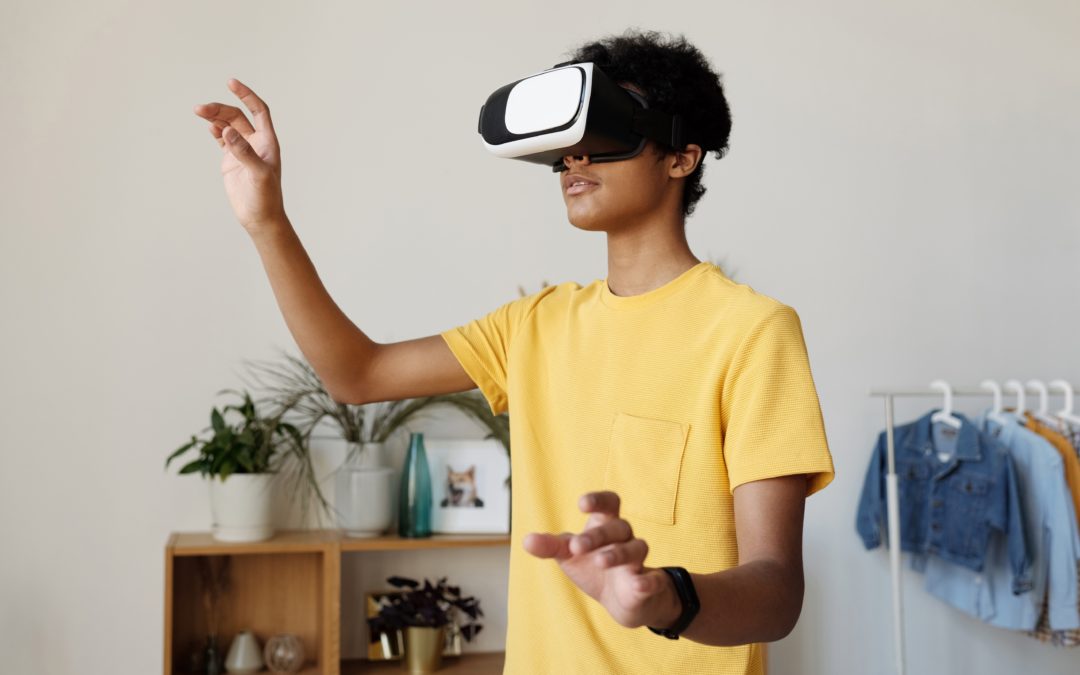
by Jacob Billings | Jun 14, 2021 | Augmented Reality, Virtual Reality
Since virtual and augmented reality are making their way into practically every aspect of our everyday lives, it is only natural that they would find their way into marketing, which is increasingly reliant on digital media. Digital marketing is defined as any type of marketing that uses electronic devices or digital content to deliver its message. Virtual and augmented reality are both examples of this. So, how can you make the most of this maybe still obscure technology? How can something that is still new and developing help your project or business? The explanation is simple: virtual reality’s unique traits — its uniqueness and lack of exploration – are precisely what makes it popular, trendy, and a breath of fresh air in the middle of all the tired marketing tactics we have seen before. Look at some basic, uncomplicated ways to use virtual and augmented reality into your marketing, and how this may help you increase your earnings in no time.
Virtual Tours
One of the most important ways this technology can benefit your business is by allowing your consumers to take a virtual tour of your choice. Do you have a store of your own? A restaurant? Or possibly a manufacturing facility where your product is made? Your consumers can put on a virtual reality headset and be instantly transported to another world, thanks to the miracles of virtual reality. They can either glance about the environment and experience the ambience, or they may be able to wander around and find new things, depending on the complexity of the program. Virtual tours are an excellent approach to introduce your places to customers who are unable to visit them in person.
New Launch Hype
Assume you have been developing a new product. It has been in the works for some time and is soon to be released to the public. Traditional advertising and marketing tactics are in place, but virtual reality may be worth considering. You can generate buzz and gain interest by having your customers look at the product itself before the launch, or even test it out. When it comes to launching a new product, you want as much attention as possible.
Product Testing
Whether your product is new or not, allowing customers or clients to try it out before purchasing is always a good idea. That way, they can get a sense of how the product functions and how it might appear in their home or on their person, and they will be more confident and happier with their purchase, boosting the chances of their return to you for more. It is a win-win situation for everyone. Virtual reality product testing can be used on a wide range of products, from garments and footwear to automobiles and other modes of transportation, as well as travel packages and real estate. Customers will appreciate the opportunity to try out the product.
Building Relationships
You are building your customer relationships by incorporating virtual reality into your marketing initiatives in all these ways. This is particularly true among the younger generation. New technologies spark people’s attention and provides an opportunity for them to learn more about your organization and/or projects. Through virtual reality, you can quickly explain how your business runs and how your staff contributes to a common goal, allowing your customers to feel more emotionally invested in the result.
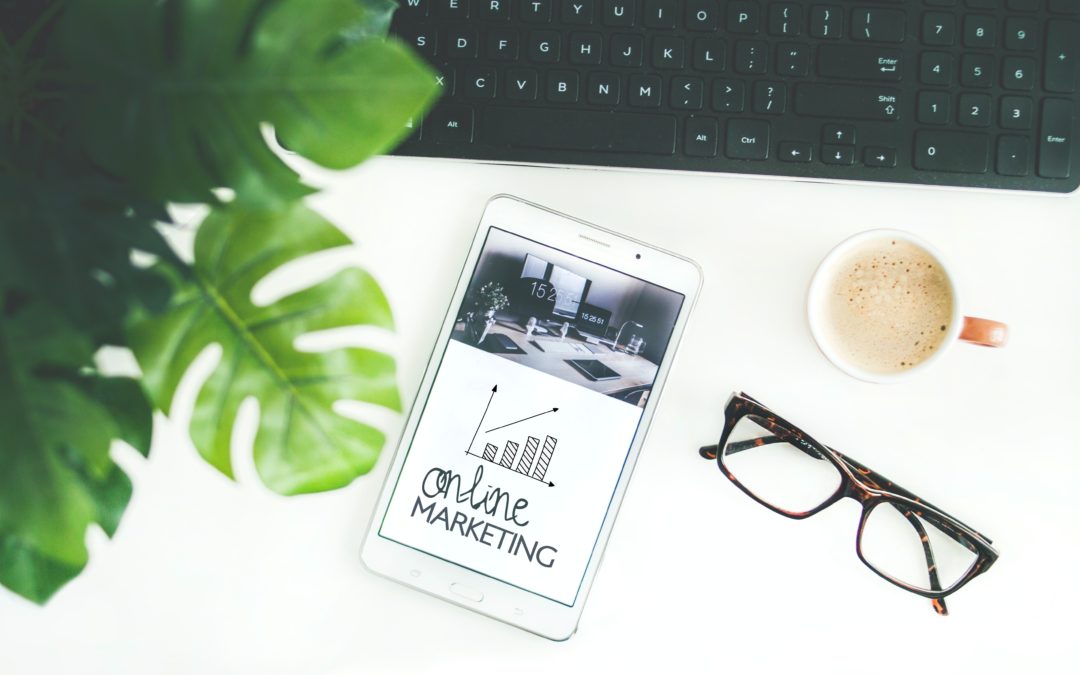
by Jacob Billings | Jun 10, 2021 | Augmented Reality, Virtual Reality
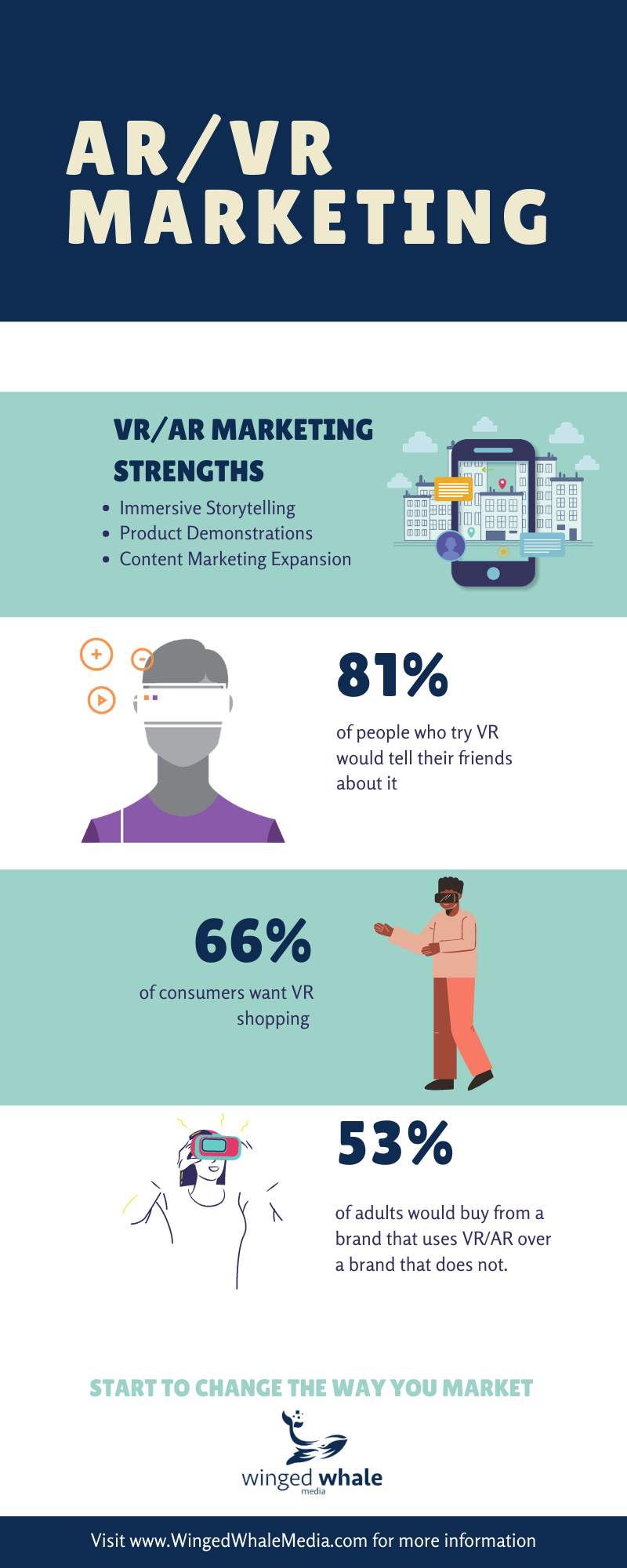
This age market is driven more than ever by the needs and desires of consumers. Augmented reality (AR) and virtual reality (VR) are emerging marketing trends that enable brands to provide unique experiences to their customers while tapping into the convenience of their mobile devices. Immersive storytelling, product demonstrations, content marketing expansion, and letting customers try before they buy are just a few of the benefits of VR and AR marketing. According to recent studies, about 2/3 of consumers want to shop using VR, and more than half would prefer to buy from a brand that employs VR/AR. Virtual reality and augmented reality aren’t just new frontiers in gaming. They stand to be one of the driving forces behind marketing innovations over the coming years.
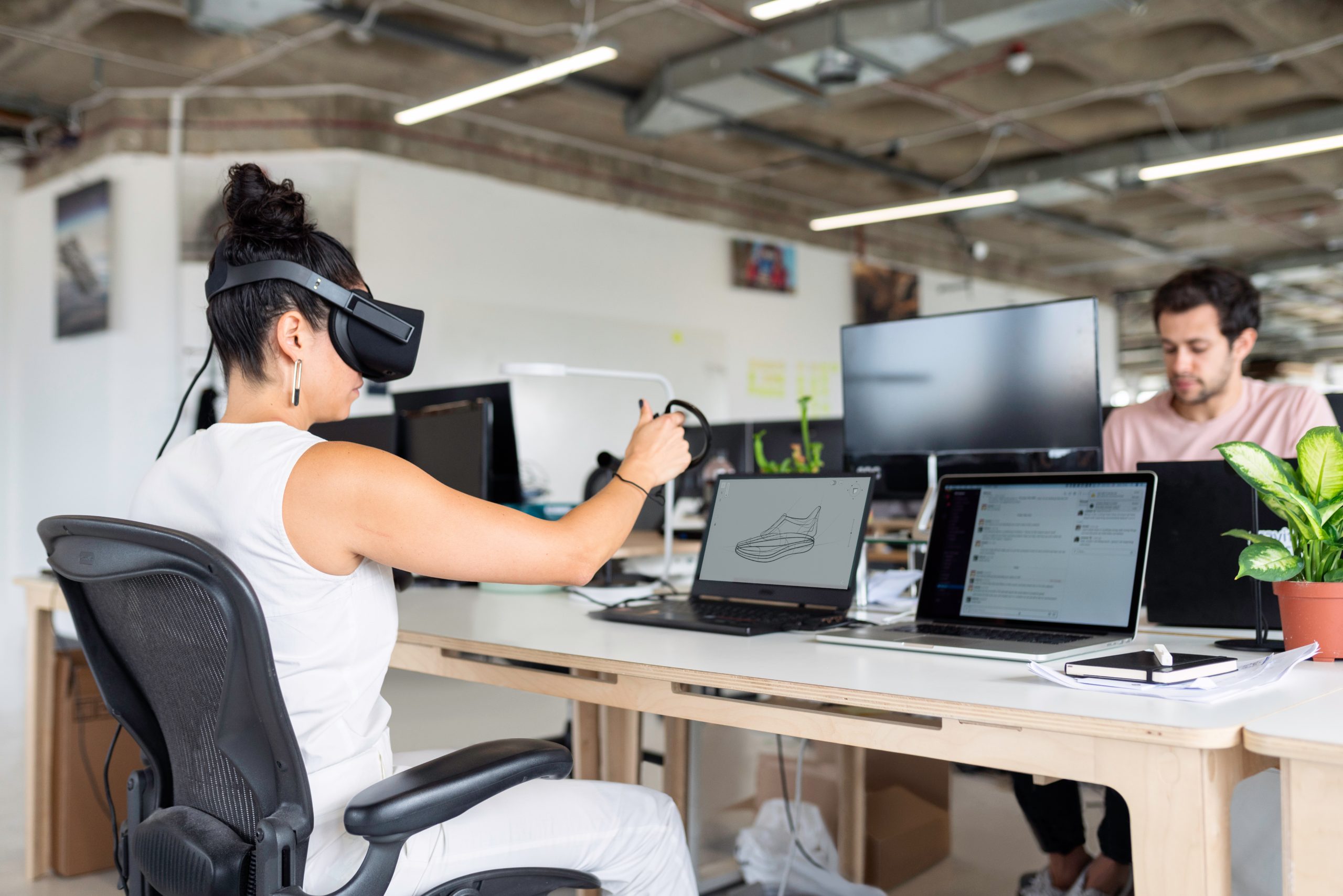
by Jacob Billings | Jun 10, 2021 | Virtual Reality
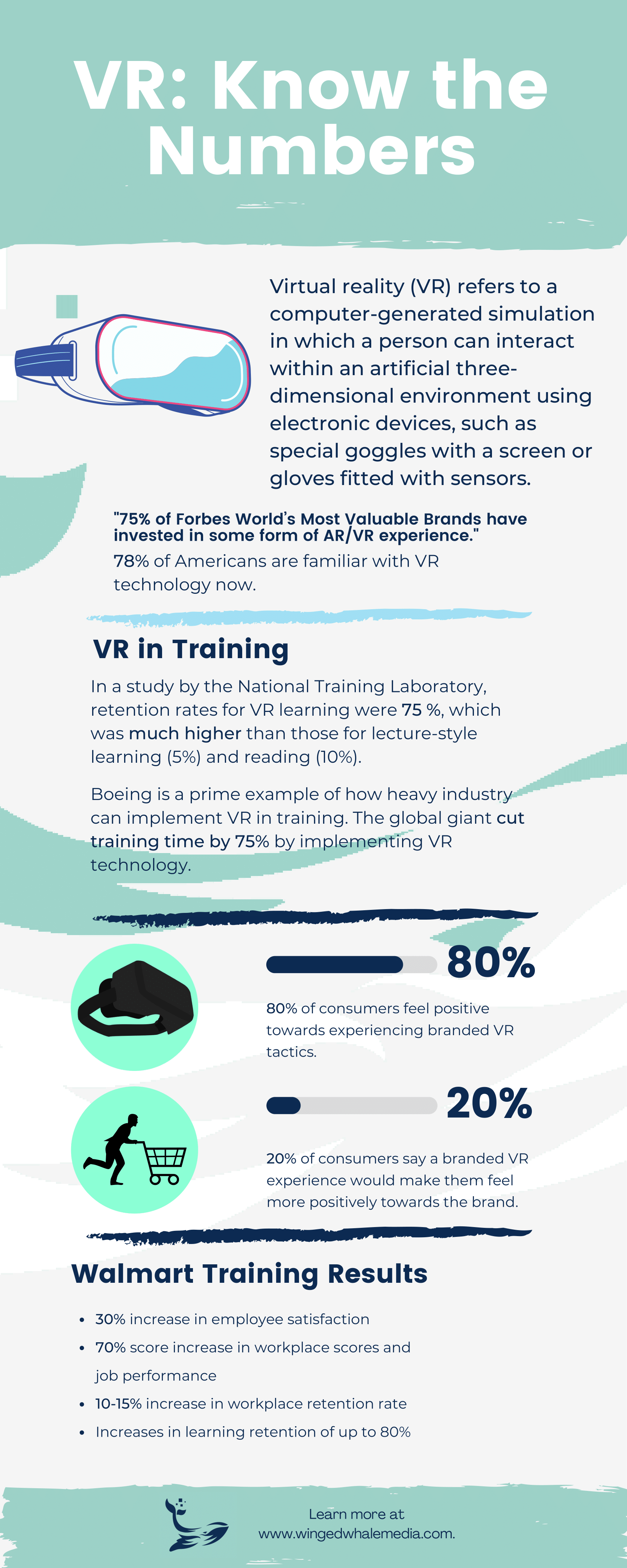
Virtual reality (VR) refers to a computer-generated simulation in which a person can interact within an artificial three-dimensional environment using electronic devices, such as special goggles with a screen or gloves fitted with sensors. Virtual Reality Training is the digital simulation of lifelike scenarios for training purposes. Trainees enter a 360°, active learning environment, experiencing sights and sounds that dissolve the barrier between virtual and actual reality. 75% of Forbes World’s Most Valuable Brands have invested in some form of AR/VR experience. Walmart’s VR training resulted in a 30% increase in employee satisfaction, a 70% score increase in workplace scores and job performance, a 10-15% increase in workplace retention rate, and Increases in learning retention of up to 80%. Virtual reality is not a technology used just for gaming, its applications are endless.

by Jacob Billings | Jun 10, 2021 | Augmented Reality, Virtual Reality
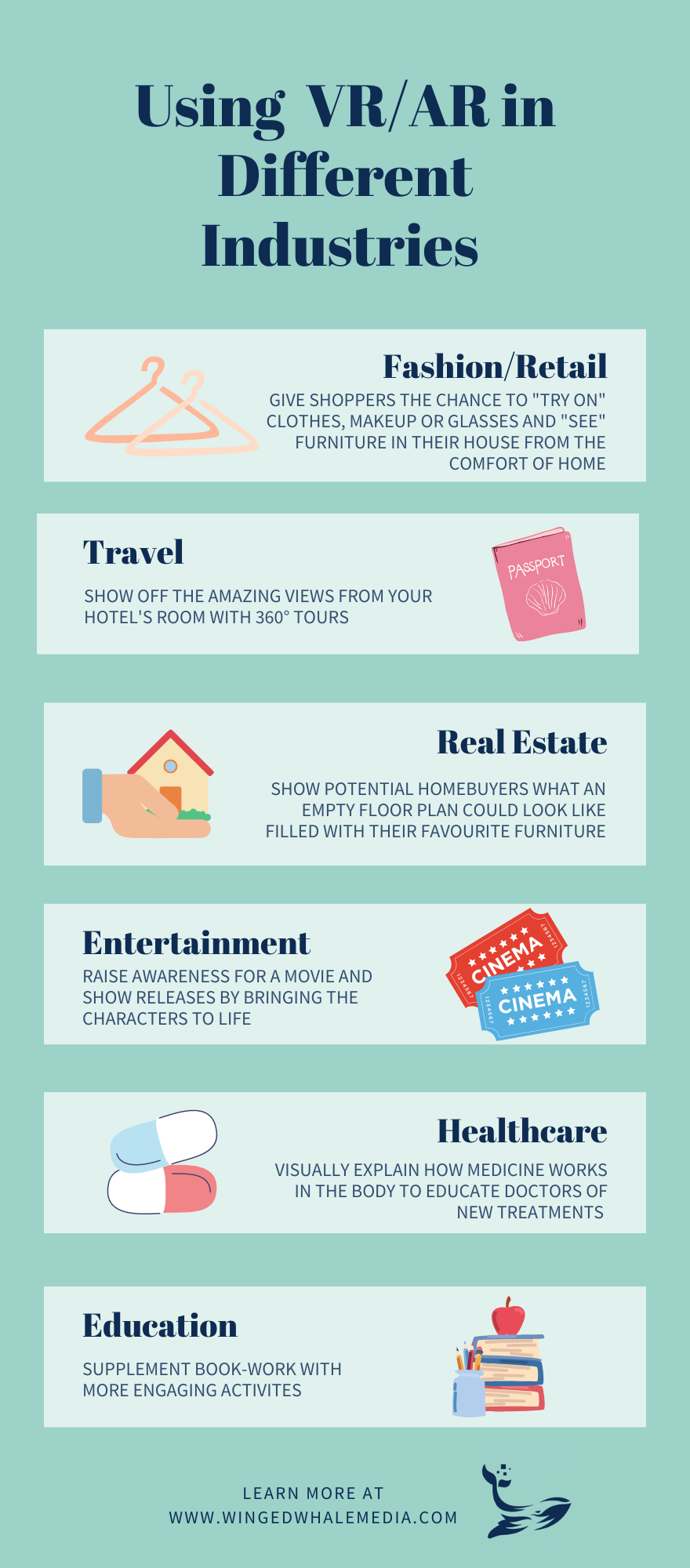
Virtual reality and Augmented reality are not just changing the way we game. Many other industries are adopting VR and AR to change the way they market or approach their demographics. Take the Automotive industry, for example, VR allows engineers and designers to experiment easily with the look and build of a vehicle before commissioning expensive prototypes. Huge brands like BMW and Land Rover are already implementing this technology. Other industries like fashion/retail and entertainment have also adopted this new technology to allow customers to try on clothing or chat with their favorite movie characters from the comforts of their home. Even the Real estate and travel industries have taken advantage of this new technology to show floor plans filled with the homebuyer’s favorite furniture or market the views from their hotel rooms. These are just a few examples of the uses of VR and AR. These new technologies are more than likely to influence your work[lace, hobbies, and life in the future. The possibilities of VR and AR are as endless as the human imagination.












